According to the Jewish historian Josephus (Jewish War 7:389-406), when the Roman Tenth Legion finally captured the desert fortress of Masada in the spring of 73 CE, bringing a tragic end to the Jewish Revolt, 960 Jewish defenders of Masada–men, women, and children–perished at their own hands the night before the Romans broke into the camp. Though a few historians have doubted the historical veracity of Josephus’s heroic account, in the main it has been substantiated by the archaeological work done at the site over the past 50 years. [1]Nachman Ben-Yehuda has been prolific critic of Josephus’s story, see The Masada Myth: Collective Memory and Mythmaking In Israel (University of Wisconsin Press, 1995) and Sacrificing Truth: … Continue reading
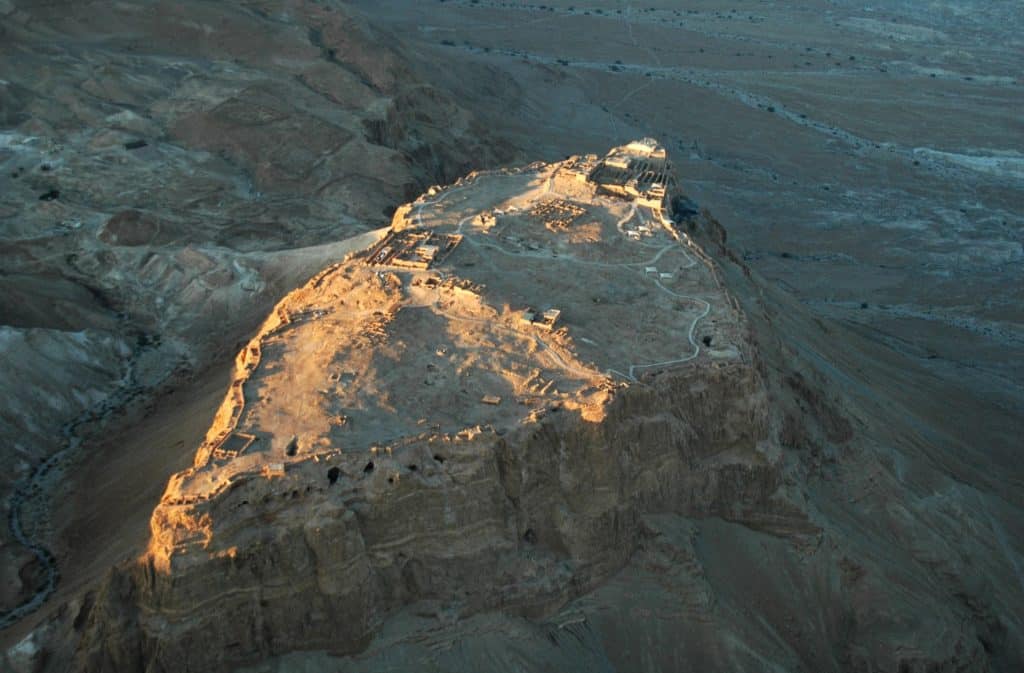
Today Masada remains the single most visited tourist site in Israel, so much so that any tour to Israel, whether Jewish, Christian, or other, must include a visit to Masada on the itinerary. I could not count the times I have visited Masada, sometimes walking up the narrow snake path, but most often, with groups in tow, taking the lovely cable cars to the 1300 foot plateau. Twice I have even rappelled down into the caves on the southern tip of the fortress, seeking to learn more about Masada’s ultimate mystery–what happened to the skeletal remains of the defenders? The most likely hypothesis is that the Romans would have buried them in a pit, cremated them, or thrown them over the steep sides of the ravine, since they subsequently occupied the site themselves for several decades. No evidence of either a burial pit or funerary pyre has yet been found. The Hebrew text Yossipon, offers an alternative account to the Greek versions of Josephus most familiar to us. It says the men killed the women and children only, buried them in a pit at Masada, and then died fighting the Romans, inflicting significant casualties before they were wiped out. Tourist who visit the site are often told by their guides about the skeletal remains of three individuals found at the base of the northern palace–as if they jumped off or were thrown off the heights–a young man, a young woman, and her child. Portions of the braided hair of the woman are on display to this day at the Masada museum and the Israel Museum. What many do not realize, including scholars in my field, is that much larger representation of human skeletal remains were discovered in the row of caves at the very southern tip of Masada, particulary in the double cave marked on the excavation map as 2000-2001. I have rapelled down the side of the southern tip of Masada on three different occasions and thoroughly examined this cave–other than the accumulated dust and animal droppings it is completely clean of material remains.
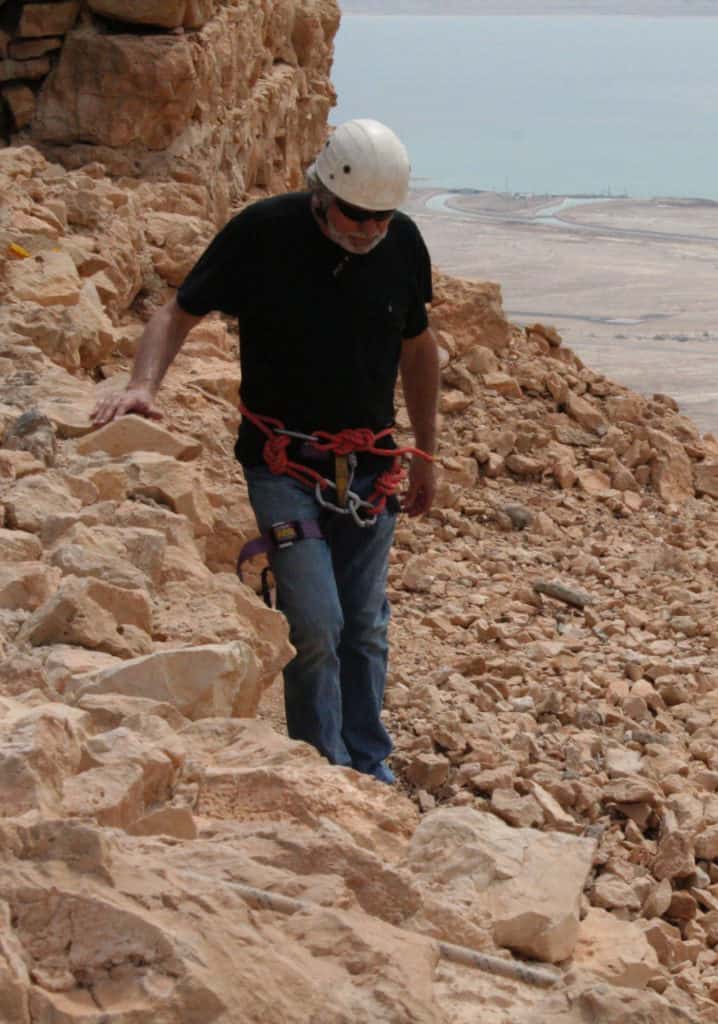
In the fall of 1963, just into the first season of the famed Masada excavation conducted by Yigael Yadin, human skeletal remains of 25 individuals were discovered in one of the caves just below the southern edge of the fortress. The following is my full summary of what we know about these bones and what still remains to be determined.
The Discovery
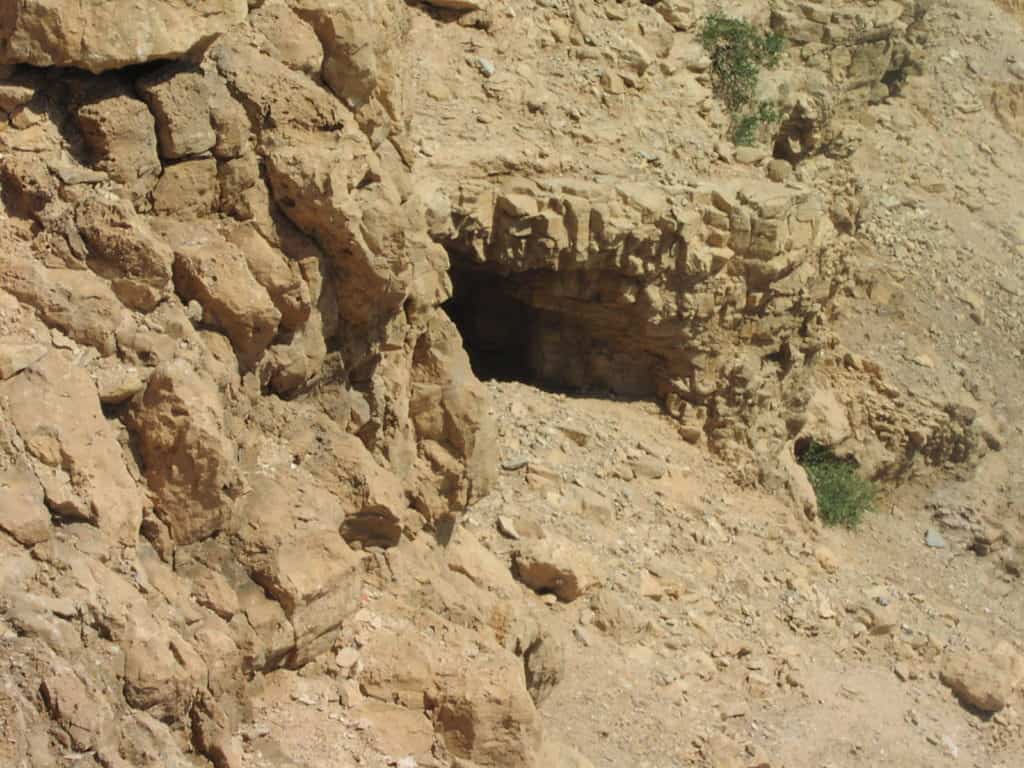
The Masada “Cave of the Skeletons” (loci 2001-2002) was first mentioned in Yigael Yadin’s preliminary report Masada: First Season of Excavations 1963-64 (Jerusalem: Israel Exploration Society, 1965), pp. 90-91. This volume contains a short report by Yoram Tzafrir who was the supervising excavator for the locus. The cave is the westernmost of a row of caves below the southern cliff of Masada. It is elongated, with its western half designated locus 2001 and its eastern locus 2002.
Tzafrir reported (based on Dr. Nicu Haas’ evaluation) that 25 skeletons were found in this cave: 14 males, 6 females, 4 children and one foetus. The women were all ages 15-22 years; the men were aged 22-60, one being over 70, and the children were 8-12 years of age. Six of the men, aged 35-50, were of a powerfully built, distinctively different physical type from the rest. Tzafrir writes that the cave was rich in material remains: juglets, cooking pots, fragments of mats, food remains. The bodies were in disarray, as if tossed in heaps, with fragments of clothing throughout.
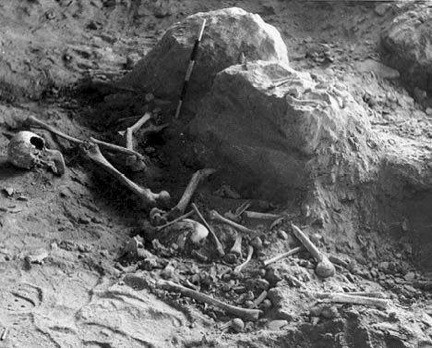
Cave on the South Face of Masada
Yadin also relates the find in chapter 15 “The Remains of the Last Defenders” in his popular illustrated book Masada: Herod’s Fortress and the Zealots’ Last Stand (Jerusalem: Steimatzky’s; 1966, pp. 192-199). His book includes a photo of a portion of the cave floor with a some of the skeletons visible (pp. 198-199). Yadin reports, also basing his summary on Dr. Nicu Haas’ examination, that 14 were males between 22-60, one is a man over the age of seventy; 6 are females between 15-22; 4 are children between 8-12, plus the embryo. His enumeration appears to separate the 14 males aged 22-60 from the single man over 70, thus making 15 adult males and bringing the total skeletons to 25 plus the foetus. It remains unclear whether there were a total of 25 skeletons including the foetus (Tzafrir) or 25 plus the foetus.
Neither Yzafrir nor Yadin report when the Cave was discovered and cleared out. Both conclude that the remains are those of the defenders of Masada, ruling out that they were Romans or later Byzantine monks, based on Dr. Haas’ conclusion that most of the skulls matched the type discovered in the Bar Kochba caves in Nahal Hever.
If this was truly Yadin’s conviction, it is puzzling that these extraordinary finds in Cave 2001 were never reported to the press. In contrast, when three skeletal remains (a man, woman, and child) were found in the Northern Palace in late November, 1963, Yadin called a press conference and excitedly reported his find of the very bones of some of the Jewish defenders of Masada. I have now been able to determine, based on confidential sources, that Cave 2001 was discovered and cleared in late October, 1963, just one month earlier, making it all the more puzzling that these bones were not mentioned at that time, or at least when those of the Northern Palace were reported in November. Neil Silberman, in his definitive study of Yadin titled A Prophet from Amongst You (1993), makes the point that Yadin’s Masada efforts were very much driven by ideological factors and that finding human remains of the Masada defenders was a central part of his agenda—in order to confirm the heroic account of Josephus (see pp. 278-281). One can only wonder what reaction the discovery of these 25 skeletons caused on the part of Yadin and his senior staff at the time. The Jerusalem Post published regular stories throughout the dig season on what was being found–however, a thorough search of all these accounts indicates that nothing was reported about the contents of Cave 2001. The Post ran a special “Masada Section” written by Yadin on November 27, 1964 as the second season of the excavation began. In it he reports on his sensational finds of the first season, including the mosaics of the palace, the scrolls, the synagogue, the mikvas, and even the three skeletal remains of the “defenders” in the Northern Palace. Curiously, no mention is made of the skeletons found in Cave 2001. Further, the Illustrated London News published an even more extensive report with photos by Prof. Yadin on October 31, 1964, and once again Cave 2001 and its contents are not mentioned, while the three skeletons found in the Northern Palace are highlighted (pp. 693-697). The only press account I have found that mentions the Cave 2001 finds is a report on the press conference that Yadin held following the second season’s excavation (November, 1964-April 1965), published in the Jerusalem Post on March 28, 1965. He laments that only 28 skeletons had been found at Masada, leaving the mystery of what happened to the more than 900 others that Josephus claims died there in April, 73 C.E.
The Burial Controversy
A major public controversy regarding the skeletal remains from Masada erupted two years later. Following the publication of Yadin’s popular book on Masada in 1966 (reviewed in the Jerusalem Post, December 23, 1966), Agudat Yisrael MK Shlomo Lorinez mounted a vigorous protest in the Knesset, bewailing the fact that these Jewish defenders had never been given a proper burial (Jerusalem Post, March 23, 1967). Lorinez charged that cynical archaeologists and medical researchers were violating Jewish law and that according to his sources, some of the skeletons had even been sent abroad. Yadin’s defenders in the Knesset replied that the research was necessary to determine as accurately as possible the identity of these remains, whether Jewish, Roman, or Christian.
Dr. Haas’ research apparently continued over the next two years as the question of when and where to re-inter the Masada bones became more heated. Yadin was strongly opposed to the plans of the Religious Affairs Minister and the Chief Rabbis to bury all the remains in the Jewish cemetery on the Mt. of Olives. He argued that only the three found in the Northern palace were most certainly Jewish, and that the identity of the remaining 24 (this is the number reported in the Jerusalem Post story, March 11, 1969 based on Yadin’s statement), which had been found “in a cave” was uncertain, though they were probably Jews. This position starkly contradicts the view he expresses in his book, namely that “they can be only those of the defenders of Masada” (p. 197). Yadin wanted these remains to be buried quietly in the cave where they were found. A hastily appointed Ministerial Committee ruled on March 23, 1969, that all the bones found at Masada would be buried at the site and plans were made accordingly. The burial took place on July 7, 1969, near the tip of the Roman ramp (this description of the location, taken from news reports, does not make clear the precise location of the site). Chief Chaplain of the Army Rabbi Shlomo Goren officiated at the ceremony, which included full military honors. Prof. Yadin read part of Josephus’ record of the final speech of Eleazar, Jewish commander of the defenders of Masada in 73 C.E. Various dignitaries were also present, including MK Menachem Begin. It should be noted that the press reports consistently refer to 27 skeletons, three from the Northern Palace and 24 (rather than 25) from the southern Cave (see Jerusalem Post, July 7, 1969).
One significant sidelight to the 1969 controversy was Yadin’s revelation, reported in the Jerusalem Post on March 4, 1969, that animal bones, including pig bones, were found among the remains in the Cave. In a 1981 interview with Post reporter Benny Morris, Yadin said that he told the chief rabbi Yehuda Unterman back in 1969 that he could not vouch for these bones being Jewish since “the pile of bones found in the cave on Masada’s southern face were mixed together with bones of pigs” (Jerusalem Post, November 11, 1981). More recently Joe Zias has offered further argument that the “pig bones” were the reason for Yadin’s reticence. [2]“Whose Bones?” Biblical Archaeology Review 24 (1998): 40-45, 64-64 and most recently, “Masada: Who is a Jew?” at The Bible & Interpretation, available here. In my view … Continue reading
Finally, on September 4, 1994 a new tomb for the Defenders of Masada was unveiled. Funded by the National Parks Authority, the monument has twelve stones signifying the tribes of Israel and is located at the foot of the Roman Ramp on the northwest side of the fortress (Jerusalem Report, Sept 5, 1994). It was not revealed whether the remains were moved or disturbed by this operation but one assumes they were left in their 1969 location.
Carbon-14 Dating
Despite all the questions regarding whether the bones found in Cave 2001 were Jewish or not, Prof. Yadin later asserted, in the same 1981 interview with Morris, that Carbon-14 tests were never carried out on these remains nor on those found in the Bar Kochba caves. He said it was not his business to initiate such tests. In the same interview, anthropologist Patricia Smith said Carbon-14 dating was expensive and that facilities to carry it out in Israel had only recently become available, so such tests were done infrequently in the past. The subject had come up in connection with assertions that the Bar Kochba skeletons, found in Nahal Hever, were actually from the Chalcolithic period. The latter were subsequently buried in Nahal Hever on May 11, 1982 with a State funeral officiated by Chief Rabbi Shlomo Goren and attended by Prime Minister Begin. [3]A preliminary check of the journal Radiocarbon indicates Yadin did indeed send materials to the lab in Cambridge, England from the Bar Kochba caves during 1961-63, and that others in Israel (e.g. … Continue reading
In 1991 Joseph Zias of the Israel Antiquities Authority initiated a C-14 test of woolen textile from Cave 2001 at the Weizmann Institute. The results came out 77 C.E. (+/- 37), indicating the probability that these were remains of the Jewish defenders of Masada (see Jerusalem Post, Sept 20, 1991 as well as the Addendum, “Human Skeletal Remains from the Northern (sic) Cave at Masada—A Second Look” by Joseph Zias, Dror Segal, and Israel Carmi, Masada: Final Reports, Vol. IV, pp. 366-367). [4]“Northern Cave” is an unfortunate but acknowledged misprint in the volume and should have been “Southern Cave.”
The Nicu Haas Examination
The Masada skeletal remains were apparently in the control of Dr. Nicu Haas (Dept. of Anatomy, Hebrew University-Hadassah Medical School) from their discovery until their re-interment in July, 1969—a period of over five years. Dr. Haas never published anything on these remains. Dr. Haas lapsed into a coma due to a fall in January, 1975 and died in November, 1987. He is best known for his work on the Giv’at ha-Mivtar/Jerusalem skeletons, which included the remains of the Roman period “crucified man” Yehochanan. [5]See his detailed anatomical report “Anthropological Observations on the Skeletal Remains from Giv’at ha-Mivtar” Israel Exploration Journal 20 [1970]:38-59; as well as the revisions … Continue reading Although aspects of Prof. Haas’ work on human remains have been criticized and his failing health hampered his work over the years, his published articles demonstrate his general ability to produce detailed reports and analysis with drawings, tables, and statistical measurements. That he never published even a preliminary report on the results of the Masada skeletal remains is regrettable. Joseph Zias reports that in cleaning out Prof. Haas’ office and files following his death he discovered nothing in the way of notes, drawings, or analytical data relative to the Masada remains. A subsequent search by Alan Paris of the Israel Exploration Society and Associate Editor of The Masada Reports, in response to my own 1994 queries in this regard, has produced a few notes on the Masada skeletons that were found stored in the attic of one of Dr. Haas’ relatives which I now have. They are currently being analyzed by several Israeli forensic anthropologists.
One particularly intriguing mystery is this photo of an intact skeleton given to Joe Zias by the late Ehud Netzer, and subsequently published by Zias in Biblical Archaeology Review. In contrast to the jumble of skeletal remains of the 25 individuals in Cave 2001 this individual seems to be laid out for burial on a niche outside the cave and toward the east. So far nothing has been definitively published on the provenance of this find, or where these bones ended up, assuming they are separate from those reportedly buried at the foot of the ramp at Masada. [6]See my article on this subject in The Bible and Interpretation, here.
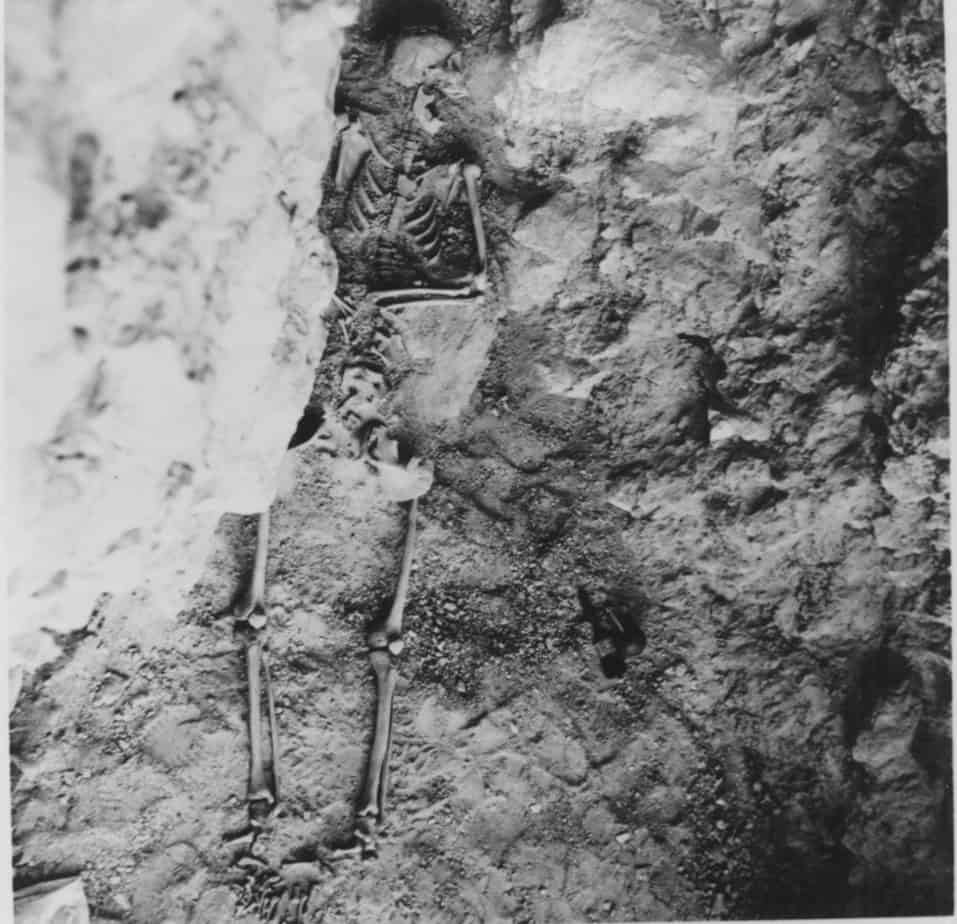
Conclusion: What We Know and Don’t Know About the Bones
I want to stress here that I am not implying any kind of conspiracy or bad effort by anyone who has been involved in the archaeological investigations of Masada. My investigation is my own and has been motivated by the simple desire to sort through the facts about these skeletons discovered in the 1963 excavations. Unfortunately, at this point in time, what we don’t know, even information of the most basic sort, far exceeds what we know as the following concluding points make clear:
1. The first seven volumes of the Masada: Final Reports have now been published by the Israel Exploration Society. Other than a map which shows a drawing of the outline of Cave 2001 (Vol. III, p. 489), there is no information, discussion, or even mention of either the human or material remains of this locus in these volumes—including textiles, lamps, ostraca, basketry. This is despite Tzafrir’s recollection that the cave was “rich” in material evidence. Volume III does contain one notation in this regard: “Both the caves, surveyed and excavated in 1963-65, and this cistern [locus 2006] will not be included in the present report and will be published separately” (p. 499). It is not clear whether the editors mean Cave 2001/2002 will not be included in that particular volume, or in the Masada reports on the whole. In September, 1994 I closely questioned Israel Exploration Society director Joseph Aviram regarding plans to publish a full report on the contents of this cave. He referred me to Associate Editor Alan Paris, who following some preliminary inquiries, informed me that to his knowledge the Israel Exploration Society had no information or data on this locus (photos, drawings, written reports, notes) and he was aware of no concrete plans to cover the subject in the Final Reports.
2. In September, 1994 I also presented the same basic query in written form to Israel Antiquities Authority director Amir Drori. He replied to me by letter, dated October 6, 1994, that his information was very limited and he could not be particularly helpful, but suggested I contact editors Foerster and Netzer, as well as Yoram Tzafrir. Recently I learned, through Dan Bahat, who was a field supervisor at Masada, that Drori had actually assisted Tzafrir in cleaning out Cave 2001, so one can only assume that he would be in a position to respond firsthand to most of the questions I raised. Why he chose not to do so is unclear to me.
3. When one examines the commendably detailed volume published by Yadin, The Finds from the Bar-Kochba Period in the Cave of the Letters (Jerusalem: Israel Exploration Society, 1963), with its lavish information on every aspect of that cave’s contents, including that of the skeletal remains (photos, tables, drawings, scientific analysis), one can only wish for the same regarding Cave 2001/2002 at Masada. Given that we know virtually nothing about these skeletons, information even marginally equivalent to the details of Dr. Haas’ work on the Gi’vat ha-Mivtar remains would be most welcome. How can it be that a discovery of such significance was not carefully recorded (photos, drawings, field notes) and at least the results of Dr. Haas’ work on the human remains preserved or published?
4. For reasons that remain unclear it appears that Yadin was reticent to publicize and explore the significance of the skeletal remains of Cave 2001/2002. Perhaps he suspected they would turn out to be Roman or Christian? Perhaps the pig bones bothered him? Yet it should be recalled that Yadin mentions these animal bones quite openly to the Chief Rabbi in 1969. Surely the material evidence in the cave, as Tzafrir noted in his preliminary report, indicated nothing later than the period of the 1st Revolt. Why was this discovery not excitedly reported as Yadin had done in the case of the three skeletons found in the Northern Palace just one month later? Surely both the in situ evidence, as well as the subsequent anatomical analysis, might have indicated much of scientific interest about who these people were and how they died. And most intriguing of all, what about the single skeleton, laid out in burial fashion? Given our complete lack of data, we can not even determine which of the 26 he/she was (male, female or age). Surely this phenomenon alone deserves careful analysis and discussion, yet it was never even mentioned or reported in an already sparse set of references to Cave 2001 over the past 30 years. Many additional questions remain. Were these remains Carbon-14 dated prior to the Zias test in 1991? Were any bones shipped abroad as MK Lorinez charged? If so, where and for what purpose? What information now exists about the contents of Cave 2001—whether photos, drawings, notes, tape recorded sessions, or lab reports, and in whose hands? We can only hope that the present query will give rise to various sources of information that have been preserved so the impact and significance of this vital discovery will not be completely lost.








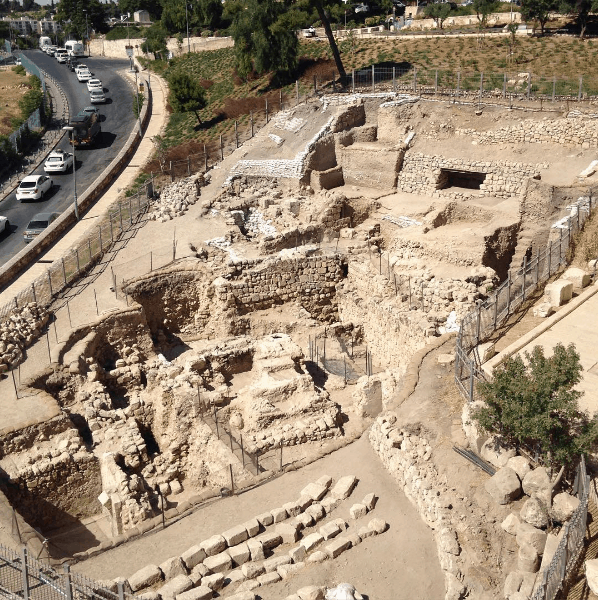
Comments are closed.